If you are looking to invest in a safe asset class that is currently offering a good yield, high-interest savings ETFs are a great option to consider.
Since high-interest savings ETFs compete directly with regular bank operations, they have actually been blocked from being purchased on three major bank platforms: BMO InvestorLine, RBC Direct Investing, and TD Direct Investing.
High-interest savings ETFs invest their assets across high-interest savings accounts at multiple financial institutions and offer investors a one-ticket solution.
I will cover the best high-interest savings account ETFs in Canada below and go over their key features.
Pros and Cons of High-Interest Savings ETFs
High-interest savings ETFs come with their advantages and disadvantages, like most other investments.
- The ability to earn a higher yield as interest rates rise
- Multiple high-interest savings accounts bundled into a one-ticket ETF solution
- High-interest savings accounts are an extremely safe investment relative to other asset classes
- A decreasing yield if interest rates begin to decline
- Being responsible for paying management fees to the fund, like most ETFs
- A conservative long-term rate of return
- Interest is less tax-efficient relative to capital gains and dividend income
With recent increases in interest rates here in Canada, high-interest savings ETFs are currently offering investors an attractive yield with very little risk.
Insurance and Safety of High-Interest Savings Account ETFs
When considering investments in high-interest savings ETFs, one of the chief concerns for investors is the security of their investments.
In Canada, most of the banks that these ETFs invest in are members of the Canada Deposit Insurance Corporation (CDIC). The CDIC provides insurance on deposits up to a specific limit, ensuring that even in the event of a bank failure, depositors will get their money back up to that insured amount.
Given that high-interest savings ETFs spread their investments across multiple banks, the risk is diversified, adding an extra layer of security.
However, it’s crucial to note that the ETFs themselves are not directly insured by the CDIC. Instead, it’s the underlying savings accounts within the ETFs that benefit from this insurance.
While the safety is indirectly passed on to the ETF investors, it’s always recommended to understand the specifics of where the ETF assets are held and the insurance provisions in place.
Best High-Interest Savings Account ETFs in Canada
- CI High-Interest Savings ETF (CSAV.TO)
- Horizons High-Interest Savings ETF (CASH.TO)
- Evolve High-Interest Savings Account ETF (HISA.NE)
- Purpose High-Interest Savings ETF (PSA.TO)
- Ninepoint High-Interest Savings ETF (NSAV.NE)
- Horizons Cash Maximizer ETF (HSAV.TO)
1. CI High-Interest Savings ETF
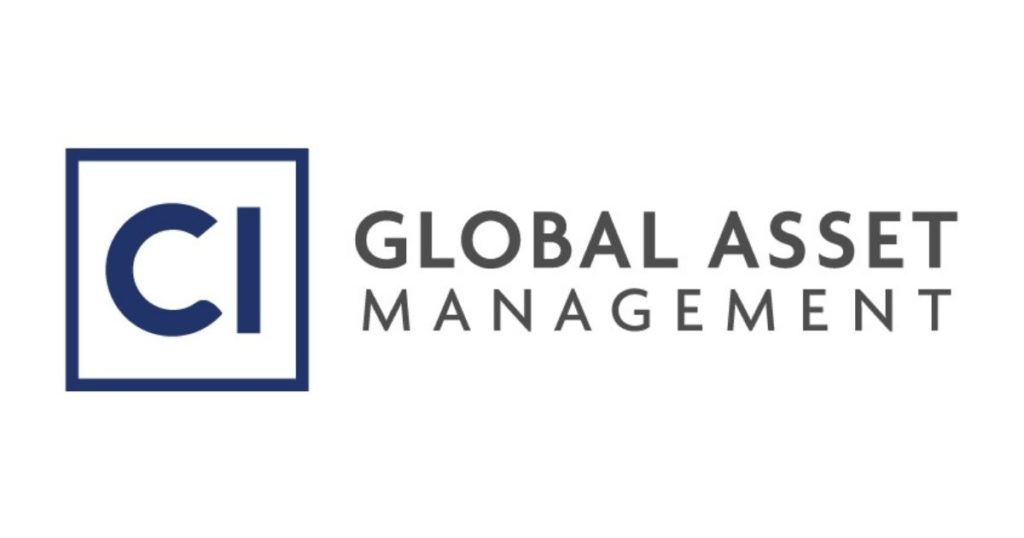
- Ticker: CSAV.TO
- Inception Date: June 14, 2019
- Assets under Management: $8.41 Billion
- Management Expense Ratio: 0.16%
- Management Style: Passive
- Risk Rating: Low
- Distributions: Monthly
- Yield: 4.67%
- Stock Price: $50.14
- YTD Return: 0.44%
CI Global Asset Management is a very large, non-bank Canadian asset manager. CI offers a great high-interest savings ETF through its CSAV fund. CSAV invests mainly in high-interest deposit accounts and is designed to help investors with short-term cash requirements.
The CI High-Interest Savings ETF currently invests in the following:
- CIBC cash account
- National Bank cash account
- Scotiabank cash account
- BMO cash account
Like other fixed-income investments, the yield generated by the CSAV ETF is treated as interest income. This means that your returns are significantly less tax-efficient than both capital gains and income received through dividends.
CSAV is a very large ETF in terms of assets under management but comes with a short performance track record. The track record here is less important, considering that the fund invests only in a handful of interest-paying accounts (whose performance is tied to interest rates).
The ETF offers an attractive yield and pays distributions to investors on a monthly basis. CSAV comes with a fairly low MER, which is roughly the same as most other high-interest savings ETF providers in Canada.
If you are looking to invest in a high-interest savings ETF, CI’s CSAV ETF is a great choice to consider.
2. Horizons High-Interest Savings ETF
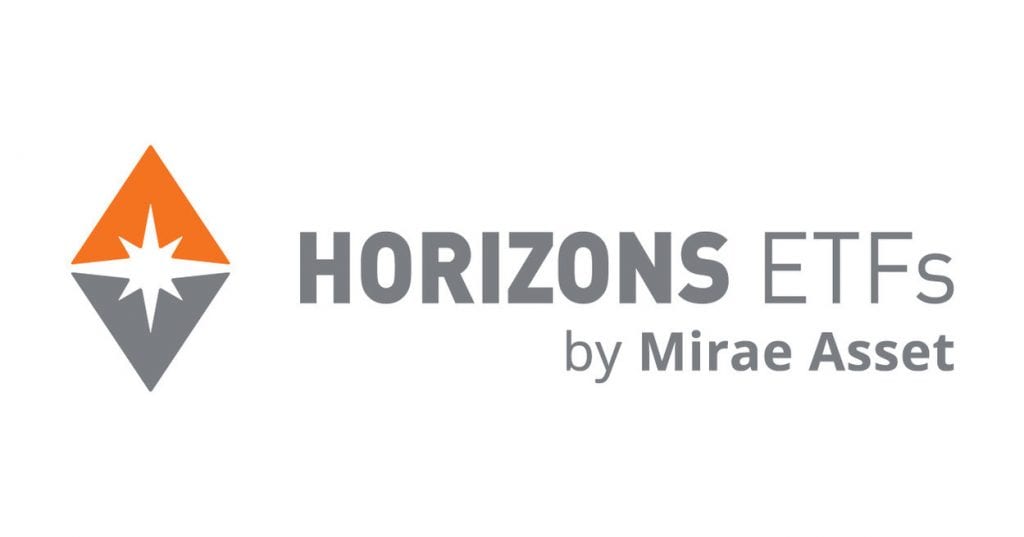
- Ticker: CASH.TO
- Inception Date: November 1, 2021
- Assets under Management: $3.55 Billion
- Management Expense Ratio: 0.13%
- Management Style: Passive
- Risk Rating: Low
- Distributions: Monthly
- Yield: 4.80%
- Stock Price: $50.08
- YTD Return: 0.44%
Horizons is a well-known provider of low-cost ETFs here in Canada, offering an excellent high-interest savings ETF through CASH. CASH invests in high-interest deposit accounts with the major Canadian banks.
CASH invests mainly in high-interest deposit accounts and is designed to help investors with short-term cash requirements.
Horizons does not specifically outline which banks it uses to deposit the fund’s assets. It outlines that 100% of deposits are with tier 1 Canadian chartered banks. Tier 1 Canadian chartered banks include:
- BMO
- Scotiabank
- RBC
- CIBC
- TD
- National Bank
CASH’s yield is treated as interest income, making it significantly less tax-efficient than both capital gains as well as dividend income.
The ETF is large in terms of assets and comes with a very short performance track record. Keep in mind that the performance track record is not as important because the ETF’s performance is almost entirely tied to interest rates.
CASH offers an attractive yield, which is marginally higher than some of its peers, and pays distributions to investors on a monthly basis. CASH is also offered at a marginally lower MER, making it a more inexpensive offer to consider in the high-interest savings ETF space.
If you are looking for an inexpensive high-interest savings ETF in Canada, CASH is an excellent option.
3. Evolve High-Interest Savings Account ETF
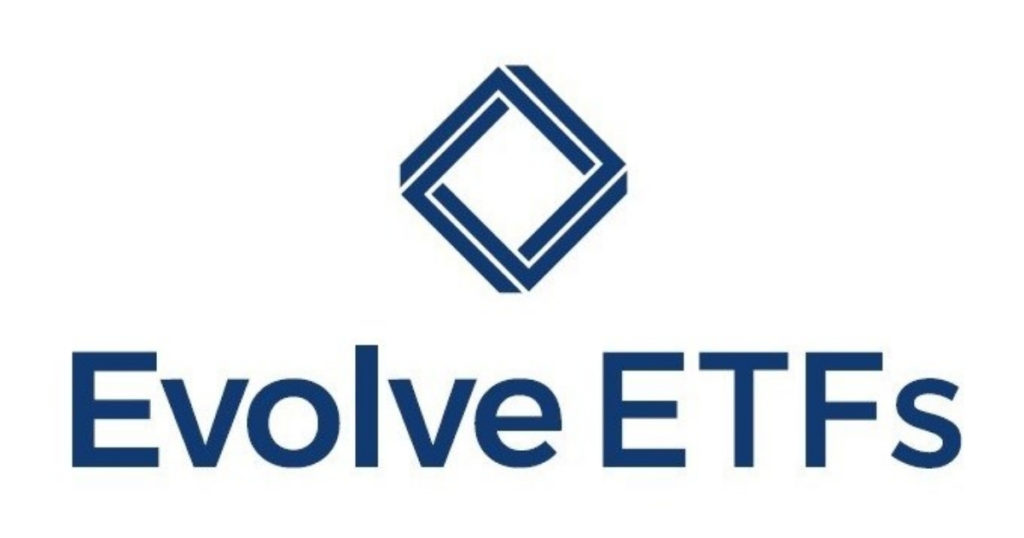
- Ticker: HISA.NE
- Inception Date: November 20, 2019
- Assets under Management: $5.13 Billion
- Management Expense Ratio: 0.17%
- Management Style: Passive
- Risk Rating: Low
- Distributions: Monthly
- Yield: 4.75%
- Stock Price: $50.09
- YTD Return: 0.44%
Evolve is a smaller, less well-known asset manager here in Canada. The Evolve HISA ETF, similar to peers on the list, invests in high-interest deposit accounts. The objective of the fund is to maximize monthly income while preserving capital and liquidity.
Evolve’s HISA ETF is listed on the NEO exchange as opposed to the Toronto Stock Exchange. As of mid-2022, HISA held its assets with four of the major banks here in Canada. These are:
- CIBC cash account
- National Bank cash account
- Scotiabank cash account
- BMO cash account
HISA’s yield is composed entirely of interest income, which is taxed unfavourably relative to capital gains and dividends.
The ETF is very large in terms of assets under management and comes at a relatively high MER when compared to other high-interest savings ETFs in Canada. HISA has a short performance track record but this is not really of much importance to the average investor.
Evolve’s HISA ETF offers a good yield and pays monthly distributions to investors.
The HISA ETF is a good option to consider, although being offered at a slightly higher MER than peers (as well as being listed on the NEO exchange instead of the TSX).
4. Purpose High-Interest Savings ETF
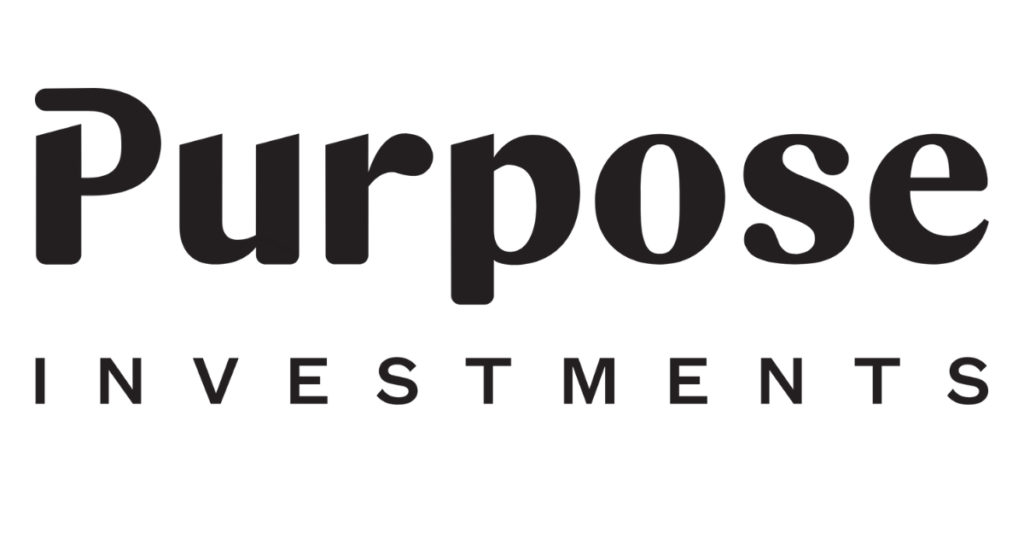
- Ticker: PSA.TO
- Inception Date: October 15, 2013
- Assets under Management: $5.47 Billion
- Management Expense Ratio: 0.17%
- Management Style: Passive
- Risk Rating: Low
- Distributions: Monthly
- Yield: 4.74%
- Stock Price: $50.1
- YTD Return: 0.42%
Purpose Investments is another smaller asset manager offering a robust investment shelf here in Canada. The Purpose High-Interest Savings ETF invests, like its peers, in high-interest deposit accounts with schedule 1 Canadian banks.
The ETF aims to pay a monthly yield to investors while offering daily liquidity.
Currently, the Purpose High-Interest Savings ETF uses the following bank cash accounts:
- National Bank cash account
- Scotiabank cash account
- CIBC cash account
- BMO cash account
PSA focuses on interest income, meaning that it offers investors a yield that is highly tax-inefficient (like other fixed income).
The fund is extremely large in terms of assets under management and is also offered at a relatively high MER when compared to its Canadian peers. PSA has a very long performance track record, although it is of limited usefulness to investors (the fund is entirely based on interest rates).
The Purpose High-Interest Savings ETF pays a good yield to investors and offers distributions on a monthly basis.
Although on the more expensive end (relative to peers) in terms of fees, the Purpose High-Interest Savings ETF has great overall features.
5. Ninepoint High-Interest Savings ETF

- Ticker: NSAV.NE
- Inception Date: August 5, 2010
- Assets under Management: $494.1 Million
- Management Expense Ratio: 0.16%
- Management Style: Passive
- Risk Rating: Low
- Distributions: Monthly
- Yield: 4.45%
- Stock Price: $50.4
- YTD Return: 0.49%
Ninepoint Partners is a small asset manager in Canada, mainly focused on alternative investment solutions. The Ninepoint High-Interest Savings ETF invests in schedule 1 Canadian bank high-interest accounts.
The ETF aims to offer investors daily liquidity while paying a good monthly yield. NSAV is listed on the NEO exchange instead of the Toronto Stock Exchange.
Unlike its Canadian peers, NSAV is virtually entirely invested in a high-interest account with only one major Canadian bank. The bank of choice for Ninepoint is currently BMO.
While the large Canadian banks are very far from being at risk of bankruptcy, other high-interest ETFs in Canada have spread out their assets across multiple banks. Like other funds on the list, NSAV pays interest income, which is unfavourably taxed relative to dividends or capital gains.
The fund is large in terms of assets under management (but considerably smaller than its peers) and is also offered at a fairly average MER relative to peers. NSAV has a very long performance track record, although this only shows movements in Canadian interest rates over time.
The Ninepoint High-Interest Savings ETF pays a good yield to investors and offers distributions on a monthly basis.
Despite having good overall features, the ETF’s allocation to fewer (currently one) different Canadian banks may not be appealing to some investors. It offers a good yield and is nevertheless a good high-interest savings ETF to consider.
6. Horizons Cash Maximizer ETF

- Ticker: HSAV.TO
- Inception Date: February 5, 2020
- Assets under Management: $2.18 Billion
- Management Expense Ratio: 0.12%
- Management Style: Passive
- Risk Rating: Low
- Distributions: Monthly
- Yield: 0
- Stock Price: $110
- YTD Return: 0.45%
Horizons also offers a second type of high-interest savings ETF. The Horizons Cash Maximizer ETF invests in high-interest savings accounts with Canadian chartered banks but does not make taxable distributions.
HSAV is designed to replicate the total return of high-interest cash savings without paying out interest. Interest gains are reflected in the net asset value of the ETF. This can help to improve the tax efficiency of the fund (especially in non-registered accounts).
Similar to Horizons’ CASH ETF, the company does not outline which banks are holding the fund’s assets.
The fund is very large in terms of assets under management and is also offered at a low MER (currently the lowest on the list). HSAV has a very short performance track record.
Since the ETF does not pay distributions, it will not appeal to investors that are looking for a constant income stream from their high-interest savings ETF.
If you value tax efficiency and do not require income from your high-interest savings ETF, HSAV is an excellent choice to consider.
It’s very important to mention that HSAV has suspended new subscriptions to this ETF after it had reached $2 billion in market cap. This means that you won’t be able to purchase shares directly from the company and must do so in the secondary market.
The reason the company has decided to suspect new subscriptions is to help manage the potential tax implications that come with having a tax structure that HSAV has chosen, and that it can continue with its dividend reinvestment strategy. If the fund grows too large, the company might not be able to execute this strategy.
Are High-Interest Savings ETFs Worth the Fees?
High-interest savings ETFs offer investors a lot of convenience in terms of trading and saving time.
Investors can open or close high-interest savings positions without having to actually open a high-interest savings account (HISA) at the nearest bank. Opening or closing a HISA at multiple banks will take you even more time.
In exchange for this convenience, investors are responsible for paying the ETF’s management expense ratio. High-interest savings ETFs charge investors very low fees, especially relative to some bond funds.
With the recent increases in interest rates as well as expectations for continued rate increases, high-interest savings ETFs are a great fixed-income investment vehicle.
Alternatives to High-Interest Savings Account ETFs
While high-interest savings ETFs offer an attractive yield with minimal risk, especially in a rising interest rate environment, there are alternative investment vehicles investors might consider.
- High-Interest Savings Accounts (HISA): Directly opening a HISA with a bank or credit union eliminates the middleman, thus avoiding the ETF management fees. This direct approach can be beneficial for those who prioritize ease of access to funds and don’t mind dealing with the bank directly. Here’s our picks for the best HISA’s in Canada.
- GICs (Guaranteed Investment Certificates): For those looking for a fixed return over a specific period, GICs can be an alternative. They offer guaranteed returns over their term, but they don’t provide the same liquidity as HISAs or high-interest savings ETFs. Here’s our list of the best GICs in Canada.
- Money Market Funds: These funds invest in short-term, high-quality investments like treasury bills. They offer liquidity and a low-risk profile similar to high-interest savings ETFs but may come with slightly different yields.
- Short-Term Bond ETFs: For those looking for a bit more risk and return, short-term bond ETFs can be an option. They invest in bonds with shorter maturities and can offer higher yields than high-interest savings ETFs, especially when interest rates are rising.
How to Buy the Best High-Interest Savings ETFs in Canada
The cheapest way to buy ETFs is from discount brokers. My top choices in Canada are:
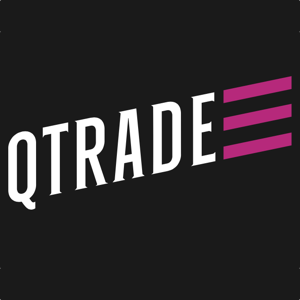
- 105 commission-free ETFs to buy and sell
- Excellent customer service
- Top-notch market research tools
- Easy-to-use and stable platform

- Stock and ETF buys and sells have $0 trading fees
- Desktop and mobile trading
- Reputable fintech company
- Fractional shares available
To learn more, check out my full breakdown of the best trading platforms in Canada.
Conclusion
High-interest savings ETFs, with their low MERs and high yields given rising interest rates, are a great investment option given current market conditions.
Most of the ETFs listed above are fairly similar in terms of their investment approach. The main differentiating factor is small differences in management fees.
If interest rates continue to rise in the future, high-interest savings ETFs are likely to outperform typical bond funds.
If you are new to investing and are just starting to trade ETFs, be sure to read my guide outlining how to buy ETFs in Canada.






Hi I’m looking for the hi interest etf in Corporate. Any and all suggestions?
Hi, Christopher. Very good article – thank you. I would say, however, that it should mention that HSAV.TO is now suspended, so that new investments are not accepted. One can only buy it at a premium, and the manager discourages doing so.
Hey thanks Rob, I thought I had added a note about this previously, but I saw that I had forgotten. I’ve added it now, thanks for pointing this out!
C’mon TD, open up access to these high interest ETFs to TD Direct clients. You are doing us a disservice. Not inspiring a great deal of loyalty. You are supposed to be helping.
I think these funds are quite handy and useful for parking money in a TFSA investment account while waiting for other investment opportunities. Would you agree?
Also, are there similar USD ETFs that can be invested through an USD investment account with a discount broker?
Can you suggest for parking USD and CAnadiand dollesr in quest trade and Wealthsimple margin accounts. For easy liquidity and high interest rate paid . Thanks
If you have money in an RBC account, do they have any high interest ETF options? I want to park some cash, but I want it to be fairly liquid so locking in a GIC isn’t really an option. Thanks!
The interest rate on Yahoo reflects the prior twelve months whereas the high rate is based on the most recent rates, projected forward.
So, G&M has sort of copied this article – the gist of it anyway.
Oddly, the yield on some of these products seem to be exaggerated by the Fund Companies. For example, the Evolve HISA ETF (Ticker:HISA) had a December distribution of $0.1865/unit (which was higher than its Nov. distribution). Annualized, that’s $2.238/unit. The units trade at or about $50 each (52 wk. range: $50.00-50.19). You correctly show (and link to) their claimed yield – i.e., 4.74%. However with an annualized forward distribution of $2.238/unit, and a $50 cost, that looks to me to be a forward yield of only 4.476%. A forward rate of 4.74% equates to a distribution of $.1975/unit/mo.
Any idea as to how Evolve has calculated forward yield? It might be that that rate (which they note is “gross yield”), is before the management expenses. However, if that is the case, they deducted $0.011/unit from the gross. If so, that’s a heck of an expense ratio…
Note that many websites – or their data providers – screw up forward yield calculations on a wide range of stocks. I’ve given up relying on G&M for forward yield calculations. Just for fun, check out their forward yield on BCE-PR-E shares…it’s off by nearly 3% (shows right now as 5.22%; it’s actually 8.17%)
Cheers.
Hey Ian, this is a good question – so actually when I link to here, it matches your calculation almost exactly as of Dec 28th it shows 4.46%, which I’ve now updated in the article: https://evolveetfs.com/product/hisa#tab-content-distributions/
The discrepancy might have been the date that the yield was calculated on, plus it seems Evolve calculates it as a gross yield of fees.
And wow that is quite a big difference for the Globe and Mail! Yes I’ve noticed yield calculations are all over the place around the internet. Thanks for letting me know.
So lets say I buy 10,000 shares of any one of the 4 etf’s on the xdivy day at $50.01 then sell the 10,000 shares at $50.19/ $50.20 the day before xdivy and repeat every month until interest rates start the inevitable decline…non registered account…capital gain instead of interest…giving up a penny doing it this way but its CG instead of interest income.
You would sell before you get your dividends? That way you don’t get any dividend income at all. And you may or may not get any capital gains, depending on how the market moves. You’re giving up one stream of income from this ETF. I believe you’re focusing too much on the taxes, and losing sight of the total profits from dividends and cap gains.
Are they dividends or distributions of income?
My understanding is if reported on T3 slips as most ETFs are, the return should be classified as a combination of dividends, capital gains and return of capital. But if classified as interest income (taxed at your marginal rate), then Tony’s logic of selling just before the ex-div date to maximize the after tax return makes alot of sense.
Hi Christopher,
I’m considering parking some money here until the stock market situation clarifies. I have had a couple of well informed people recommend CASH.TO. Would you sleep well if you put 100 000$ in that ETF? If interest rates start heading down will that affect the unit price? Thanks!
There’s always the risk of losing money with any ETF or mutual fund, but it’s extremely low risk here as it invests all in cash and cash equivalents. If you’re worried, I would consider parking your 100K in a high-interest savings account like EQ Bank directly (2.50% interest rate), or consider a GIC (currently a 1-year GIC at EQ Bank is 5.00% for example) – see this for current rates: https://wealthawesome.com/recommends/eq-bank
What are the other alternatives if my bank “rbc direct” do not offer these options as you mentioned?….
Thanks
Sure, you can try one of these other platforms: https://wealthawesome.com/best-trading-platform-canada/
Just wondering, why your article correctly shows these ETFs currently yielding 4% while Yahoo incorrectly shows 1.6%?
I added hyperlinks to the fund facts to make it more clear – I believe that Yahoo is incorrect for the yields for these particular ETFs, Yahoo is stating them too low given the interest rates